Introduction
Voyage planning is an essential ship, crew and cargo safety process which has long been mandated through IMO Conventions. The critical importance of this process has been recently highlighted by an English Court of Appeal ruling in The CMA CGM Libra. This notable decision confirms that a shipowner is responsible for any pre-voyage negligence by their master and deck officers which results in reliance on an inadequate and unsafe Voyage Plan. Further, that any such causative inadequacy will render their vessel unseaworthy both in terms of her navigational equipment and in law.
This Risk Bulletin aims to raise awareness of shipowners, their ship managers and masters of the serious losses, inclusive of groundings and pollution, which may result from failures of Voyage Planning. By way of solutions, the pro-active steps required to avoid such costly failures are also featured.
Background
Voyage Planning has been in use by prudent mariners for centuries. However, the manner in which this process must be accomplished and the high level of detail a Voyage Plan must contain is now regulated by SOLAS, the STCW Convention and associated IMO Guidelines for use onboard vessels trading internationally. For vessels trading domestically, Non Convention Vessel Standards (NCVS) or Rules (NCVR) based on the SOLAS and STCW requirements will apply.
In brief, the current Voyage Planning regulations obligate the application of four interactive stages:
- Appraising all relevant information (inclusive of updating all charts and publications).
- Planning the intended voyage (from berth to berth, inclusive of pilotage).
- Executing the plan, taking account of prevailing conditions
- Monitoring the vessel’s progress against the plan continuously.
The process is complex. Its accomplishment requires the greatest possible care by a diligent and well trained 2nd Officer/Navigator. Final and formal approval of stages 1. and 2. must then be provided by a prudent Master prior to departure from port. Failure can result in the vessel being considered as unseaworthy.
IMO Regulations and Guidelines
For vessels trading internationally, the first step to ensuring IMO Voyage Planning compliance is to identify and be aware of the applicable IMO Regulations and the associated Guidelines. These requirements are detailed in:
SOLAS Chap 5, Safety of Navigation
Regulation 27 – requires that “Nautical charts and nautical publications… shall be adequate and up to date.”
Regulation 34 – requires that “Prior to proceeding to sea, the master shall ensure that the intended voyage has been planned… taking into account the guidelines and recommendations developed by the [IMO] Organization.”
Annex 23 – expands on and provides the detail of the obligations imposed by Regulations 27 and 34. It refers to IMO Res A.893(21) and affirms the application of the four interactive stages of Voyage Planning as stated above.
RESOLUTION A.893(21), GUIDELINES FOR VOYAGE PLANNING – supports the SOLAS Chap 5 obligations by expanding on and explaining the four stages of Voyage Planning in considerable detail.
STCW Convention, Section A-VIII/2, Part 2 (Voyage Planning) – provides an outline of the requirements for Voyage Planning detailed in SOLAS Chap 5, Annex 23 and RES. A.893(21). Any non-compliance will be considered as a breach of the STCW Convention.
For vessels trading domestically, the requirements for Voyage Planning will be contained in the applicable NCVS rules and/or other flag state law. MM members should confer with their flag state authority to obtain the applicable references to national law.
As an example, Indonesian NCVS Chapter III, Equipment, Para 5.3.4, requires the provision of adequate and up to date charts. Further, Indonesian Regulation No. 13 of 1970, Art. 65 advises that, in relation to Voyage Planning, vessels engaged in domestic trade should comply with “…the principles and instructions in accordance with the STCW Code [Chap VIII, Watchkeeping].”
Voyage Planning Publications
The second step to ensuring compliance is to provide shipmasters and all deck officers with all of the information and templates they require to fully understand and implement the IMO or NCVS requirement for Voyage Planning as applicable to their vessels. Ready access to the IMO Conventions and Guidelines referred to above is essential. Additionally, there are two user friendly publications which have been written to further explain and support the Voyage Planning process to IMO standards.
ICS Bridge Procedures Guide, 5th Ed., which, at Chap 2. provides 10 pages devoted to explaining Voyage Planning, as detailed in SOLAS Chap 5 Annex 23 and RESOLUTION A.893(21). It includes checklists and a searchable CD. It may be purchased from the ICS website or from chart agents.
Passage Planning Guidelines, 2019 Ed., published by Witherby Seamanship International, provides 150 pages explaining Voyage Planning using paper charts or ECDIS. It includes worked examples and templates.
These two publications are recognised internationally and should be considered as setting the current shipping industry ‘best practice’ standard.
ISM Code and SMS Manual
The third and most important step to ensuring Voyage Planning compliance is by its formal incorporation into each vessel’s ISM Code or NCVS required SMS manual and supporting procedures. These procedures must refer directly to the applicable IMO or NCVS Voyage Planning regulations together with an on board copy of one or both of the Voyage Planning publications referred to above.
SMS manuals and procedures must of course be audited on a regular basis both externally by flag state (usually by a designated Recognised Organisation or RO) and internally by the ship owner (often the Designated Person Ashore or DPA). The Voyage Planning component of the SMS is one which is technical and complex. In order to provide an effective safety barrier, it therefore requires auditing by a person who is a qualified and experienced navigator and not just an administrator as many DPAs legitimately are.
Conclusion and Takeaway
As a consequence of the Court of Appeal’s finding of ‘unseaworthiness due to inadequate voyage planning’ in The CMA CGM Libra case, cargo was entitled in law to refuse to contribute to General Average (inclusive of salvage costs). It was therefore a very expensive day for both shipowners and their insurers.
MM would therefore like to emphasise the serious dangers and consequences of inadequate Voyage Planning to its members. Much of the problem appears to lie in a failure of understanding by many masters and deck officers of Voyage Planning regulatory requirements and their application. A common example is a so-called ‘Voyage Plan’ presented for compliance assessment which is little more than a bare waypoint list for entry to a GPS unit. If the attending surveyor is from Port State Control (PSC), this will almost certainly result in a non-conformity notation.
In addition to PSC problems, an inadequate Voyage Plan can place a vessel in extreme danger of grounding with resultant crew injury, oil pollution and cargo damage followed by massive salvage and/or wreck removal costs. Much cheaper then to invest some time and effort in re-training and a small outlay on publications to ensure that Voyage Planning in your fleet meets full compliance. MM therefore recommends to its members that they instruct their ship managers and masters to:
- Review their ISM Code SMS manuals and procedures to ensure that the content fully supports either the relevant IMO Convention or NCVS/Flag State Law Voyage Planning requirements, as appropriate.
- Ensure that fleet SMS procedures incorporate direct references to the governing Regulations and Guidelines and that copies of the relevant texts are provided as annexes to the SMS procedures.
- Organise the purchase and provision at least one or both publications ICS Bridge Procedures Guide or Passage Planning Guidelines to each vessel.
Arrange for external and internal audits of the SMS Voyage Planning procedures to be conducted by a well-qualified and experienced navigator and that any observed non-conformities are dealt with promptly and in full accordance with the ISM Code.


